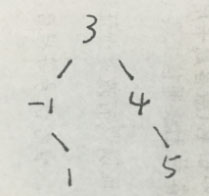Python单元测试框架unittest使用方法讲解
概述
1.测试脚手架(test fixture)
测试准备前要做的工作和测试执行完后要做的工作.包括setUp()和tearDown().
2.测试案例(test case)
最小的测试单元.
3.测试套件(test suite)
测试案例的集合.
4.测试运行器(test runner)
测试执行的组件.
命令行接口
可以用命令行运行测试模块,测试类以及测试方法.
python -m unittest test_module1 test_module2
python -m unittest test_module.TestClass
python -m unittest test_module.TestClass.test_method
可加-v打印详细信息
python -m unittest -v test_module
测试案例自动搜索
unittest支持简单的test discovery. 命令行传入discovery后,框架会自动在当前目录搜索要测试的案例并执行.搜索目录必须是包或者模块.基本使用如下:
cd project_directory
python -m unittest discover
子选项如下:
-v, –verbose
输出信息的详细级别
-s, –start-directory directory
开始搜索目录 (默认为当前目录)
-p, –pattern pattern
匹配的文件名 (默认为test*.py)
-t, –top-level-directory directory
搜索的顶层目录 (默认为start directory)
创建测试代码
1.方式一
创建子类继承unittest.TestCase,然后重写以下方法
class WidgetTestCase(unittest.TestCase):
def setUp(self):
pass
def runTest(self):
pass
def tearDown(self):
pass
运行
2.方式二
编写以test开头的方法
class WidgetTestCase(unittest.TestCase):
def setUp(self):
pass
def test_xx1(self)
def test_xx2(self)
...
def test_xxN(self)
def tearDown(self):
pass
构建测试套件
方式一
widgetTestSuite = unittest.TestSuite()
widgetTestSuite.addTest(WidgetTestCase('test_default_size'))
widgetTestSuite.addTest(WidgetTestCase('test_resize'))
方式二(推荐)
def suite():
suite = unittest.TestSuite()
suite.addTest(WidgetTestCase('test_default_size'))
suite.addTest(WidgetTestCase('test_resize'))
return suite
方式三(推荐)
def suite():
tests = ['test_default_size', 'test_resize']
return unittest.TestSuite(map(WidgetTestCase, tests))
方式四
多个测试套件构建成更大的测试套件
suite1 = module1.TheTestSuite()
suite2 = module2.TheTestSuite()
alltests = unittest.TestSuite([suite1, suite2])
方式五
unittest的TestLoader提供生成默认的测试套件
suite = unittest.TestLoader().loadTestsFromTestCase(WidgetTestCase)
忽略测试案例( Python2.7支持)
可以分无条件忽略和有条件忽略,通过装饰器实现
class MyTestCase(unittest.TestCase):
@unittest.skip("demonstrating skipping")
def test_nothing(self):
self.fail("shouldn't happen")
@unittest.skipIf(mylib.__version__ < (1, 3),
"not supported in this library version")
def test_format(self):
# Tests that work for only a certain version of the library.
pass
@unittest.skipUnless(sys.platform.startswith("win"), "requires Windows")
def test_windows_support(self):
# windows specific testing code
pass
测试类也可以忽略
@unittest.skip("showing class skipping")
class MySkippedTestCase(unittest.TestCase):
def test_not_run(self):
pass


